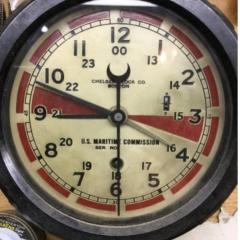Hampden pocket watch 2575591 16s Balance not moving freely (replaced balance staff)
-
Recently Browsing
- No registered users viewing this page.
-
Topics
-
Posts
-
The 3930 is just the reference from GR who make these springs and the X after signifies it's for a auto. So from a google search. 1.45 is the height 7.0 is the size of barrel this will fit from the washer 0.075 is the thickness which is where the strength comes from 240 is the length which equate to running time The critical part is the strength. If you fit a stronger one i.e. 0.085 then the potential is the watch would run faster, especially as these are newer materials. Obviously the height is also significant and you can't fit a higher spring in the barrel, but going down 0.05mm won't make a difference.
-
Andy, thank you again for all your help. You are a true gent. I removed the winding stem in order to pop it into the case so I could play with the movement more easily while the dial and hands were still in place, but it appears the setting lever spring has sprung. So, unfortunately I need to address that before looking at anything else. If I might be so bold: I presume (given I know what everything else is) that the 3930 is the power rating? How do you know what a suitable rating is for a watch, how do you know 3591 (assuming that's the power) is correct for the Slava 2427? I just know it's 1.5 mm wide, 0.06mm thick (assuming my measurements were correct) and fits in a 7.0mm barrel. The magic art of knowing whether a thicker or less wide spring would be suitable is eluding me, the maths didn't turn out as I thought they would. Again, thank your for all your help thus far.
-
I've found with Russian watches they don't stick to the Swiss numbering system. The problem with the mainspring is that as this is a dual barrel system they're very small compared to most automatics. If you look on Cousins the weakest 1.45mm high spring is 0.085mm which could be too powerful for this movement and is also designed for a 7.5mm barrel. If you then look at the GR Catalogue and work back from the GR3930X, this is the first auto with correct power rating. Although you'd probably have to go back further to this one to make sure it fits.
-
By TimepieceTinkerer · Posted
Hi all, I’m currently working on an ETA 2836-2 movement. I replaced the pallet fork with a new one (ETA2801710, sourced from CousinsUK). After full reassembly and lubrication, I’ve encountered a strange issue: The movement is fully wound and has power. When I fit the balance assembly, the movement does not tick at all—completely dead. When I remove the balance, the gear train suddenly releases and spins freely, indicating power was present. The pallet fork just “floats” without snapping side to side—almost as if it isn’t even there. No interaction with the escape wheel is visible at that point. However: Before fitting the balance, I checked the pallet fork manually — it was working as it should, clearly interacting with the escape wheel. I’ve inspected the pallet bridge jewel (where the pallet fork sits) and everything looks normal. No signs of misalignment or obstruction. I’ve rechecked everything I can think of and I’m completely out of ideas. Has anyone seen this behaviour before? Any suggestions would be greatly appreciated. Thanks in advance! TT -
Thanks for the prompt response. I apologise for not stating the issue more clearly. The problem is that - what I now know I should have called - the centre wheel is not being turned by the pinion (which is driven by the barrel) with which it shares the arbour (1st photo above). The pinion & arbour are indeed reverse threaded but the arbour (the 'screw') is clearly damaged ('rounded' rather than 'sharp' threads) with swarf evident. When the pinion is screwed on there is only enough connection to prevent the pinion being lifted off but not enough to stop it turning on the arbour. Is a (reversible) repair (threadlocker?) possible in the short term while a replacement centre wheel assembly is sought so that the viability otherwise of the watch can be established?
-





Recommended Posts
Join the conversation
You can post now and register later. If you have an account, sign in now to post with your account.
Note: Your post will require moderator approval before it will be visible.